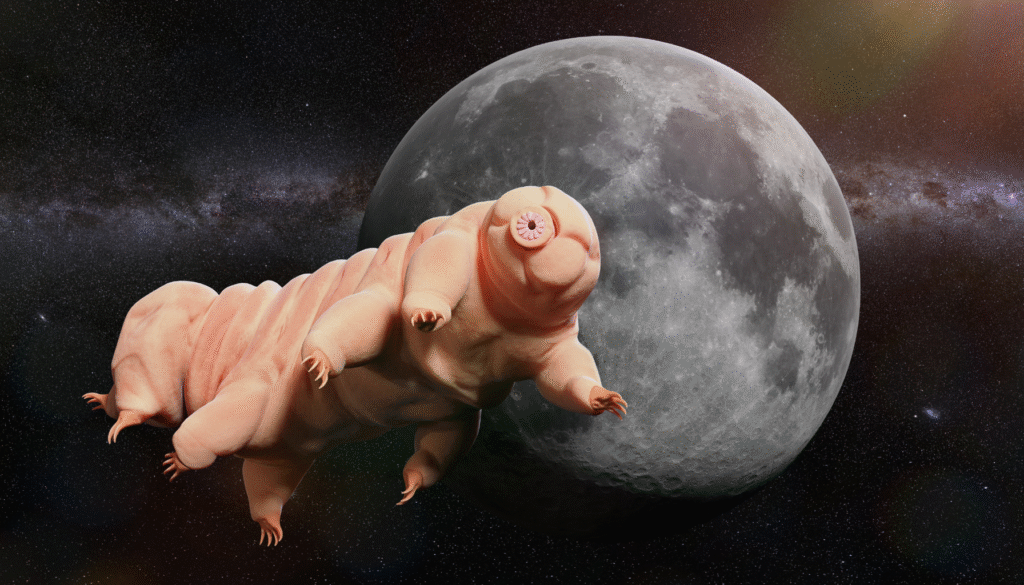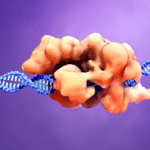They’re smaller than a grain of salt, nearly invisible to the naked eye—but they might outlive us all. Meet the tardigrade, also known as the “water bear” or “moss piglet”—a microscopic organism that can survive extreme heat, cold, pressure, radiation, and even the vacuum of space.
These bizarre little animals have fascinated scientists for decades, and now they may hold the key to understanding how life can exist—and even thrive—in the most hostile environments, including outer space.
Let’s dive into the science behind these tiny titans of survival—and what they could teach us about life beyond Earth.
What Are Tardigrades?
Tardigrades are eight-legged micro-animals, typically measuring between 0.1 and 1 millimeter in length. First discovered in 1773, they’ve since been found in:
- Mountaintops
- Deep oceans
- Volcanic hot springs
- Antarctica
- The Moon (yes, seriously—we’ll get to that)
Despite their adorable nickname, tardigrades are biological tanks—and arguably the toughest lifeforms on Earth.
What Makes Them So Resilient?
Tardigrades can enter a state called cryptobiosis, in which they shut down almost all metabolic activity, lose nearly all body water, and curl into a dried-up ball called a tun.
In this state, they can:
- Withstand temperatures from -272°C to over 150°C
- Survive radiation thousands of times higher than a human can
- Endure intense pressures, both vacuum and deep sea
- Go without food or water for decades
- Resist chemical poisoning, dehydration, and starvation
When conditions improve, they rehydrate, reboot, and come back to life.
Tardigrades in Space: Real-Life Sci-Fi
In 2007, scientists sent tardigrades into space aboard the FOTON-M3 mission by the European Space Agency. These little astronauts were exposed directly to the vacuum of space and cosmic radiation—without any protection.
When they returned to Earth, many of them:
- Survived
- Reproduced successfully
- Showed no major damage from their interstellar adventure
It was the first time multicellular organisms had survived open space—and it shook our understanding of biology.
Why Do They Matter for Space Exploration?
Tardigrades show us what biology is capable of under extreme conditions.
Implications:
- Understanding how life could survive on Mars or icy moons like Europa
- Inspiring bioengineered protection systems for astronauts
- Developing new forms of life support or radiation resistance based on tardigrade proteins
- Exploring the concept of panspermia—the idea that life could travel between planets
These creatures could be the biological blueprint for surviving in space.
Tardigrades on the Moon?
In 2019, a private Israeli spacecraft called Beresheet crash-landed on the Moon. Onboard? A payload of dehydrated tardigrades.
Although the crash ended the mission, scientists believe many of the tardigrades may have survived the impact. They’re likely still there—frozen, dormant, and waiting.
If that’s true, tardigrades have become the first Earth creatures to colonize another celestial body.
The Secret Sauce: Unique Proteins
One of the keys to tardigrade survival lies in their DNA-protecting proteins.
Researchers have identified:
- Dsup (Damage Suppressor) – a protein that shields DNA from radiation damage
- Trehalose – a sugar that stabilizes cell structures during dehydration
- Special anti-oxidative enzymes and protein-folding mechanisms that prevent cellular collapse
Scientists are now experimenting with inserting Dsup into human cells to see if we can borrow this superpower.
Could Tardigrade Biology Help Humans?
Absolutely.
Ongoing research is exploring how tardigrade proteins might be used to:
- Preserve vaccines and medicines without refrigeration
- Extend organ shelf life for transplants
- Develop radiation-resistant crops
- Create astronaut suits or skin creams with built-in cellular protection
- Boost human DNA repair mechanisms
The more we understand these creatures, the closer we get to bio-inspired resilience for humanity.
Final Thoughts: Life Finds a Way
Tardigrades remind us of a powerful truth: life is tougher than we think.
These microscopic marvels have survived for over 500 million years, through five mass extinctions—and now, possibly, on the Moon. In their tiny, weird, alien-looking bodies, they carry secrets about survival, adaptation, and the limits of biology.
In the quest to explore the universe, we may find that the best survival strategy… has already been perfected under our feet.
Sometimes, the biggest ideas come from the smallest lives.



